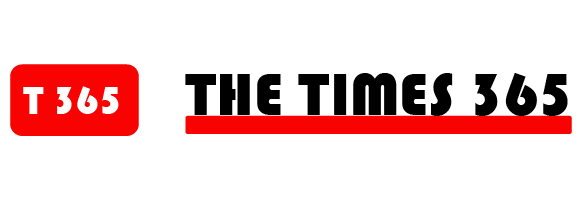It can be easy to take the greatness of “This American Life,” the weekly public-radio show and podcast hosted by Ira Glass, for granted. The show, which Glass co-founded in 1995 at WBEZ, in Chicago, has had the same essential format for twenty-eight years and more than eight hundred episodes. It was instrumental in creating a genre of audio journalism that has flourished in recent decades, especially since the podcast boom—which was initiated by the show’s first spinoff, “Serial,” in 2014. Like “The Daily Show” or Second City, “This American Life” has trained a generation of talented people, and Glass’s three-act structures, chatty cadences, and mixture of analysis and whimsy are now so familiar as to seem unremarkable. The Times’ flagship podcast, “The Daily,” basically grafts Glass’s blueprint onto the news cycle; in 2020, the paper bought the production company behind “Serial.” Other “This American Life” alums helped found production companies such as Gimlet, which sold to Spotify for two hundred and thirty million dollars before being effectively dissolved a few years later.
Glass, the son of an accountant father and psychologist mother, grew up in Baltimore with his two sisters. As a kid, he liked to go to the theatre with his family, loved comedy, put on shows in the basement; in high school, he performed in musicals and dabbled in magic. He started college at Northwestern, and worked at NPR in the summers. He eventually graduated from Brown, where he studied semiotics, then returned to NPR, where he spent the next seventeen years cutting tape and reporting and producing for “Morning Edition,” “All Things Considered,” and other shows. In 1989, he moved to Chicago, where he later co-created the show that became “This American Life”; it quickly won a Peabody Award. Now based in New York, Glass regards some of the show’s recent episodes as among its best ever. I agree. Lately, its deft touch has extended to “The Other Guy,” about people’s quasi-doppelgängers, and “Lists!!!,” about lists, and, the week after Donald Trump’s conviction in New York, “Come Retribution,” about the former President’s dreams of vengeance. The episode begins with a story about a series of Trump speeches, including his first official campaign rally in 2023, when he appeared in Waco, Texas—a place freighted with far-right symbolism—as speakers played a song sung by men imprisoned for alleged January 6th-related crimes. And that’s only the prologue.
By his own account, Glass works most of the time. We met for breakfast in Nolita after a few apologetic reschedulings; he had recently returned from a rare vacation. He arrived in a dapper suit, on a bicycle. Our conversation has been edited for clarity.
You biked in a suit!
Yes. That’s my move. It’s not that hot. When it gets hot, you take off the jacket.
It’s funny to interview interviewers.
I know, and I apologize. But I do try—as an interviewer, I feel a kind of obligation to give what I would want to get. I think it’s very much a do-unto-others-as you’d-have-them-do-unto-you situation.
You were just on vacation. How was it?
It was really nice, and I had this experience afterward that I feel embarrassed to articulate out loud. But the week after, I would wake up every morning and be, like, what is this feeling? [Laughs.] Like, Is this what it’s like to feel rested? I can’t remember the last time I was going into work and feeling kind of awake and alert and happy all day long. And it was a really productive week: we cranked out a new episode, I wrote a whole story in two days, like a twelve- or fourteen-minute story. I just felt like, this is amazing!
How do you normally clear your head when you’re in the middle of a work week? It seems like making audio requires very intense focus, and that you’d need to recharge in order to be good at it.
I mean, what I took from this experience is that I really don’t give enough thought to recharging at all. Often, I’ll get through a week and we’ll finish a show on a Friday, and the next day I get up at five and fly to a city and give a talk, and then get up at five the next morning to fly back home. And then sometimes on Sunday I’ll have some editing that has to happen, or I have to write something to get ready for the next week. So, honestly, I don’t always do such a good job of it. But the ways in which I take a break are just, you know, hang out with my girlfriend. I would say watch a movie, but I haven’t watched movies or seen any television in, like, a year.
Do you listen to stuff? Music, podcasts?
I do listen to stuff. I have a lot of, like, work-homework podcasts to catch up on, usually. And a few shows I listen to when I’m on my bike, or cooking. Generally at double speed.
I can listen to chat podcasts at double speed, but the more highly produced ones—if somebody’s sound-designed something, it just feels strange to alter it.
I don’t know. I suppose it’s disrespectful to the sound design. I feel like, if somebody’s listening to our show at double speed, go ahead. It’s fine. And also I’m old enough that, like, I started in radio when it was still reel-to-reel tape. I was a tape cutter at NPR. And when you’re a tape cutter, the physical fact is that you can’t jump around in the audio like you can on a screen, so you listen to everything at double speed, you edit at double speed, double speed doesn’t sound faster to you. It’s funny because, back then, blind people were the other group that listened to stuff at double speed.
My grandmother used to listen to Books on Tape—you could order them through a service for blind and low-vision people. They had special tape machines.
So you can speed it up. Yeah.
Do you remember the moment when the technology switched to digital?
Oh, totally. It was actually right when I transitioned from working at NPR to doing “This American Life.”
Really!
It was 1995, and NPR was still using reel-to-reel tape machines. But I was starting this new show, and I was going to have to outfit it with gear and figure out a way to pay for it. WBEZ, my partner, was also using analog tape, and analog tape is actually a lot more expensive—a reel at the time cost, like, twelve or fourteen dollars for an hour of tape. So you can see—like, to do a story you can end up running through five or six reels of tape, and the mixes would be another hour or so. And then the reel-to-reel tape machines were, like, two thousand bucks. Whereas you could get a used Mac for a few hundred bucks, then get software, and it’s so much cheaper. I just realized, like, we’d save so much money. I taught myself to edit digitally the summer before doing “This American Life.”
Were you scared, or excited about the possibilities?
I mean, all of that. I did three pilots in my dining room, just off my savings and a little bit of money from the MacArthur Foundation. Because of the MacArthur funding, there had to be an arts component. And so, if you go back to the early years of the show, there’s a much more conscious effort to mix local writers and artists with the journalism. In fact, the early pitch of the show was: we’ll take different artists and journalists and have them all look at the same subject. And so a typical show was sort of, you know, I would go to a high school that was putting on a school play, and David Sedaris would write a piece about what it was like to be a drama kid, and we would just intercut between the two. And then the staff just got more interested in the journalism side of it, and we developed other sources of funding so that we had the flexibility to not keep doing that.
Do you think you would have incorporated artists if you hadn’t had that funding?
I would have incorporated writers, because that was already happening. I’d been producing David Sedaris for “Morning Edition,” at NPR, and he would sometimes have a story that was longer than eight or nine minutes, which was the maximum length of a “Morning Edition” segment. At the time, I think their feature segments were seven minutes and their news segments were nine. So if he wrote something that was, you know, twenty-three minutes long, there was literally no place in American radio where you could put it.






